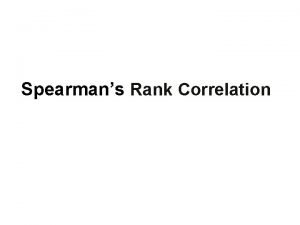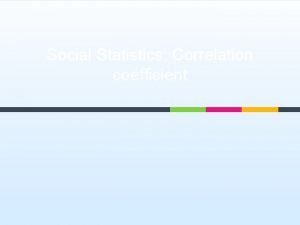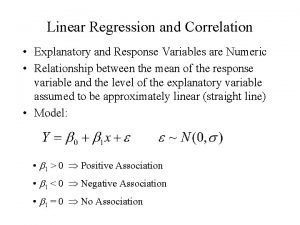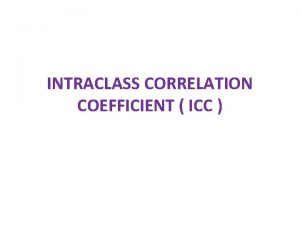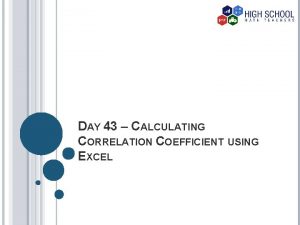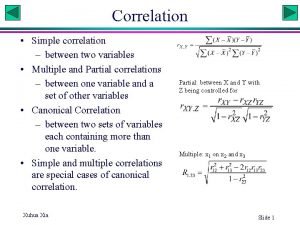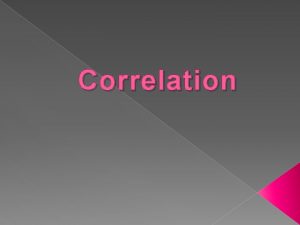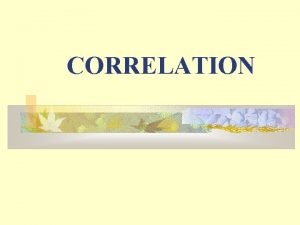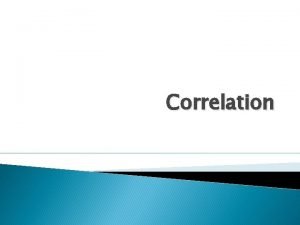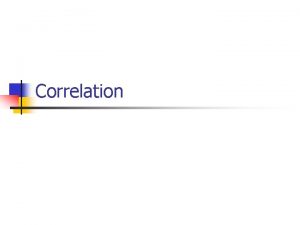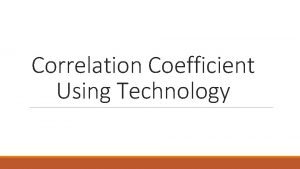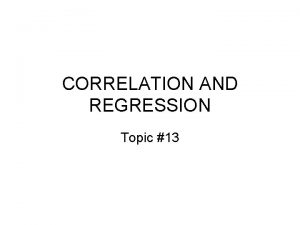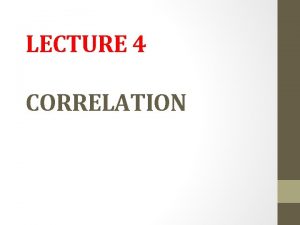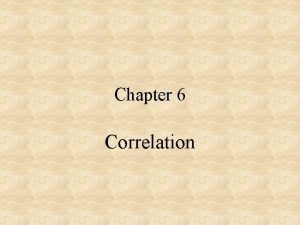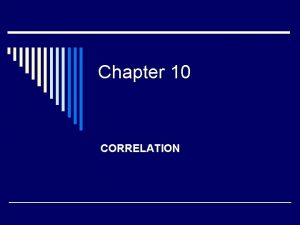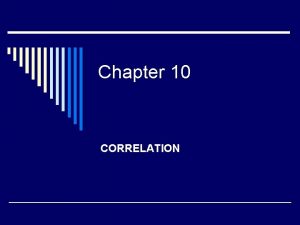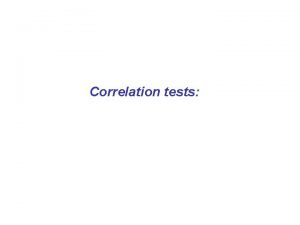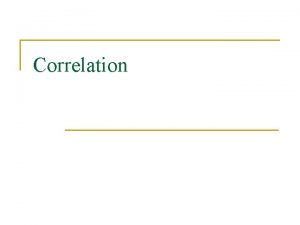Chapter 6 Correlation Different types of correlation coefficient












- Slides: 12

Chapter 6 Correlation

Different types of correlation coefficient • Pearson’s r is applicable to measure the association between two continuous-scaled variables. • Spearman is suitable to rank-order/ordinal data

correlation of. 83

correlation of. 83

correlation of. 83

correlation of. 83

In correlation there is no distinction between DV (Y) and IV (X), and thus both variables are put into Y, columns. What we care is whether X and Y are related; we don’t care about cause and effect

The eclipse (red line) covers the majority of the data. Any points outside the red line are considered outliers.

Without outliers, the sample correlation rises to 0. 6129.

But I want to infer from the sample to the population (use pairwise correlation). In the population the correlation may be as low as. 4618 or as high as. 7293.

Confidence interval • Why do we need a bracket (Confidence interval) to estimate the population correlation coefficient? Because we cannot access to the entire population, we are not sure. • If you ask me to guess how old you are and I am not sure, I would also put my estimates within a bracket (interval). Because you are in college, I guess your age is between 18 and 22.

Assignment • Mary’s highs school GPA is 3. 5 and her college GPA is 3. 7. Tom’s HS GPA is 3. 8 and his college GPA is 4. 0. If these data are used for computing correlation, what result would you expect? Write down your expectation before making any computation. Next, compute the correlation coefficient. Does the result match your expectation? Is it a valid result? Why or why not?
 Difference between spearman and pearson correlation
Difference between spearman and pearson correlation T-test for correlation
T-test for correlation Response and explanatory variables
Response and explanatory variables Intraclass correlation coefficient
Intraclass correlation coefficient Coefficient of correlation excel
Coefficient of correlation excel Partial correlation coefficient formula
Partial correlation coefficient formula Karl pearson coefficient of correlation
Karl pearson coefficient of correlation Sxsi volume of correlation
Sxsi volume of correlation Karl pearson coefficient of correlation indirect method
Karl pearson coefficient of correlation indirect method How to find correlation in r
How to find correlation in r Interprétation de coefficient de corrélation
Interprétation de coefficient de corrélation Intraclass correlation excel
Intraclass correlation excel Coefficient of regression
Coefficient of regression
